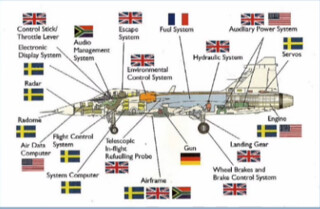The email sent will contain a link to this article, the article title, and an article excerpt (if available). For security reasons, your IP address will also be included in the sent email.

We must be able to create better complex software systems. That’s that message from Mary Poppendieck in a wonderful far ranging talk she gave at the Craft Conference: New New Software Development Game: Containers, Micro Services.
The driving insight is complexity grows nonlinearly with size. The type of system doesn’t really matter, but we know software size will continue to grow so software complexity will continue to grow even faster.
What can we do about it? The running themes are lowering friction and limiting risk:
-
Lower friction. This allows change to happen faster. Methods: dump the centralizing database; adopt microservices; use containers; better organize teams.
-
Limit risk. Risk is inherent in complex systems. Methods: PACT testing; continuous delivery.
Some key points:
-
When does software really grow? When smart people can do their own thing without worrying about their impact on others. This argues for building federated systems that ensure isolation, which argues for using microservices and containers.
-
Microservices usually grow successfully from monoliths. In creating a monolith developers learn how to properly partition a system.
-
Continuous delivery both lowers friction and lowers risk. In a complex system if you want stability, if you want security, if you want reliability, if you want safety then you must have lots of little deployments.
-
Every member of a team is aware of everything. That's what makes a winning team. Good situational awareness.
The highlight of the talk for me was the section on the amazing design of the Swedish Gripen Fighter Jet. Talks on microservices tend to be highly abstract. The fun of software is in the building. Talk about parts can be so nebulous. With the Gripen the federated design of the jet as a System of Systems becomes glaringly concrete and real. If you can replace your guns, radar system, and virtually any other component without impacting the rest of the system, that’s something! Mary really brings this part of the talk home. Don’t miss it.
It’s a very rich and nuanced talk, there’s a lot history and context given, so I can’t capture all the details, watching the video is well worth the effort. Having said that, here’s my gloss on the talk...
Hardware Scales by Abstraction and Miniaturization














 Return to Article
Return to Article